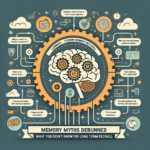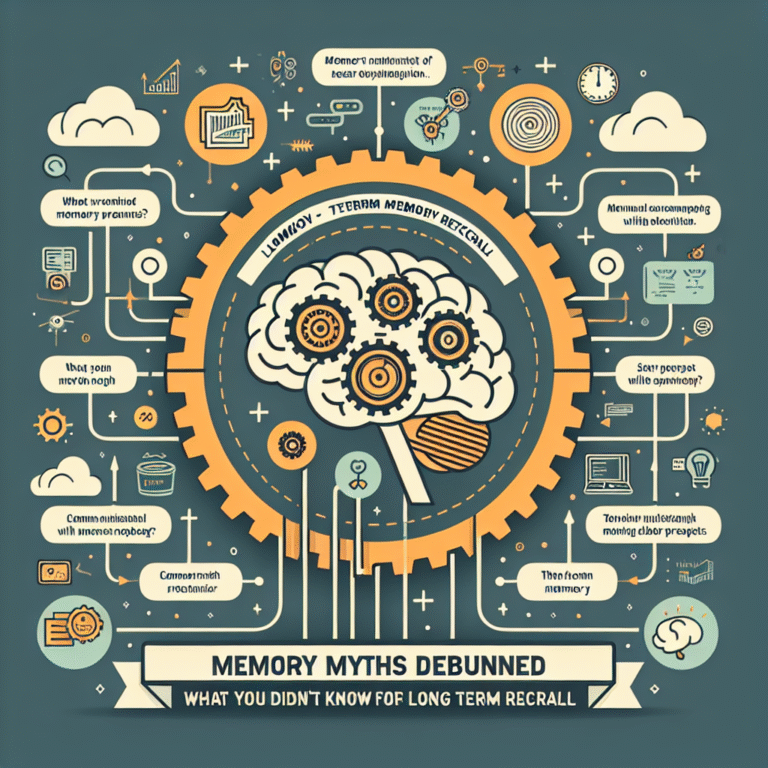
Introduction
Imagine standing on the shores of your childhood, the sound of laughter echoing in the breeze, the smell of fresh grass in the air, and the colors of a sunset filling the horizon. This vivid tapestry of memories is woven together by what psychologists call episodic memory—the cornerstone of our personal history. From Childhood to Adulthood: The Evolution of Episodic Memory charts an extraordinary journey through time, examining how our capacity for personal recollection changes across life stages. Understanding this evolution is more than just a fascinating endeavor; it directly influences our learning, our relationships, and even our identity.
In a world buzzing with fleeting moments and instant gratification, grasping the nuances of how episodic memory develops can unlock profound insights into human behavior. Are you ready to navigate this intriguing landscape, revealing the secrets of our memories and what they mean for our lives? Let’s dive in!
The Science of Memory: A Brief Overview
What is Episodic Memory?
Before we explore its evolution, it’s crucial to define episodic memory itself. This type of memory is responsible for storing and recalling specific events, situations, and experiences along with their contextual details, such as time and place. Unlike semantic memory, which pertains to facts and general knowledge, episodic memory is autobiographical and subjective, allowing us to relive moments from our lives, often accompanied by rich emotional undertones.
The Role of Neuroscience
The study of episodic memory is deeply intertwined with neuroscience. The hippocampus, a seahorse-shaped structure in the brain, plays a significant role in the formation of new episodic memories. Research indicates that different regions of the brain contribute to various aspects of memory recall. For instance, frontal lobes assist in the retrieval process, while the amygdala is implicated in the emotional dimensions of our memories.
The Evolution of Episodic Memory: A Journey Through Developmental Stages
Early Childhood: The Formation of First Memories
Critical Age for Memory Formation
Children begin to develop episodic memory skills around the age of 2-3 years. Prior to this age, memory tends to be more procedural—a learning of actions rather than events. However, as children start to engage in imaginative play and language develops, distinct memories of experiences start to take shape.
Case Study: The "Reminiscence Bump" Phenomenon
One compelling case study is the "reminiscence bump," which describes the trend where adults often recall a disproportionate number of memories from their teenage years. While this phenomenon largely occurs later in life, its seeds are planted in early childhood as foundational experiences lay the groundwork for memories that will resurface later in life.
| Table: Age of Memory Formation | Age Range | Type of Memory | Key Features |
|---|---|---|---|
| 0-2 years | Procedural Memory | Actions, skills, no event recall | |
| 2-4 years | Early Episodic Memory | Basic event recall, emotional ties | |
| 5+ years | Advanced Episodic Memory | Rich detail, narrative recall |
Middle Childhood: The Refinement of Memory Skills
During this stage, episodic memory becomes increasingly complex. Children’s narratives start to include more detail and contextual information, reflecting growing cognitive abilities.
Case Study: Narration Skills in Children
A study examining children’s storytelling abilities found that as kids progressed through grades, their narratives became more structured with clear beginnings, middles, and ends. This growth is not merely linguistic; it signifies an enhancement in episodic recall.
Chart: Story Structure in Children’s Narratives
- Kindergarten: Simple sequencing; “I went to the park.”
- 1st Grade: Basic structure; “I went to the park, and I played.”
- 3rd Grade: Rich narratives; “I went to the park with my friends, and we played on the swings, laughing until sunset.”
Adolescence: The Peak of Emotional Memory Formation
Adolescence marks a unique period where emotional memory peaks. The interplay between brain development and emotional awareness shapes this phase significantly.
Case Study: Identity Formation Through Memory
Research shows that adolescents often rely on episodic memories in social contexts to form their identities. One study indicated that adolescents recalling instances of social acceptance or rejection impacted their self-concept and confidence levels.
Emotional Tags in Memory
This stage also brings forth the concept of “emotional tagging.” Memories that evoke strong emotions—as often occurs in teenage friendships and heartbreaks—tend to be more vivid and readily accessible.
Early Adulthood: Memory Consolidation and Transition
As individuals transition into early adulthood, the nature of memories shifts once again. University years, first jobs, and relationships contribute to a rich tapestry of episodic memories.
Case Study: Memory and Education
A case study on college students revealed that those who utilized techniques such as personal storytelling in their studies retained information more effectively. These techniques leveraged episodic memory’s nuanced ability to connect information to personal experiences, emphasizing its relevance in educational settings.
Memory Challenges: From Aging to Trauma
The Effects of Aging on Episodic Memory
As we age, the evolution of episodic memory can lead to challenges. Research indicates that adults often struggle with retrieving specific episodes, leading to what experts term “tip-of-the-tongue” experiences.
The Role of Life Transitions
Major life transitions (like moving, becoming parents, or starting new careers) can further complicate episodic recall. These shifts may disrupt established memory networks, leading to struggles with recollection.
Trauma and Memory Distortion
Conversely, traumatic experiences can heavily influence episodic memory. Not only do such experiences tend to be intensely vivid, but they can also lead to distorted recollections, influenced by the brain’s attempt to cope with stress.
Case Study: PTSD and Memory Recall
A case study involving veterans with PTSD revealed that these individuals often experienced fragmented recollections of their traumatic events. This highlights the duality of episodic memory—while it can capture the essence of our lives, it can also distort under the weight of emotional burden.
The Role of Societal Influences on Memory Development
Cultural Shadows on Memory
Cultural factors significantly influence how we encode and retrieve episodic memories. For instance, collectivist societies may emphasize shared memories, while individualist cultures may prioritize personal achievements.
Case Study: Cross-Cultural Memory Differences
Research comparing memory recall strategies in different cultures showed that individuals from collectivist societies tended to remember events with more societal context, while those from individualistic societies gave more importance to personal experiences.
Technology and Memory Evolution
In recent years, technology has transformed how we document and retrieve memories. From social media to smartphones, the digital age has altered our relationship with episodic memory.
Analysis of Memory in the Digital Age
The 2019 study “Memory and Smartphone Dependency” revealed that heavy reliance on digital devices may hinder traditional memory retention and recall skills. With constant access to information, one may subconsciously rely on devices to remember events, leading to potential atrophy of natural recall.
Conclusion
The journey from childhood to adulthood is a rich, evocative tapestry sewn with the threads of episodic memory. From the innocent beginnings of first recollections to the emotionally charged experiences of adolescence and the complex narratives of adulthood, our memories serve not just as a repository of events but as integral components of our identities.
Understanding From Childhood to Adulthood: The Evolution of Episodic Memory empowers us to appreciate and nurture our memories, harness them for learning, and confront the complexities of emotional recall. As you reflect on your own memory narrative, consider how each chapter has shaped you and the path forward as you create new memories and stories yet to unfold.
FAQs
1. What are the main differences between episodic and semantic memory?
Episodic memory is related to personal experiences and events, while semantic memory involves knowledge and facts without specific personal context.
2. At what age do we start forming episodic memories?
Children typically start to form episodic memories around ages 2-4, transitioning from procedural forms of memory.
3. What affects the accuracy of episodic memory?
Factors like emotional state, time since the event, and external influences (like societal narratives) can affect the accuracy of episodic recall.
4. Can episodic memories be improved or enhanced?
Yes! Techniques like storytelling, journaling, and memory exercises can enhance one’s ability to form, retain, and recall episodic memories.
5. How does trauma affect episodic memory?
Trauma can lead to distorted memory recall, often presenting memories as fragmented or overly vivid, influenced by emotional responses.
This exploration of From Childhood to Adulthood: The Evolution of Episodic Memory illustrates the intricate relationship between our memories and our lives, serving as a reminder to cherish and nurture this precious aspect of humanity. Venture forth armed with insights, and may your own memory journey continue to unfold in meaningful, empowering ways!
















